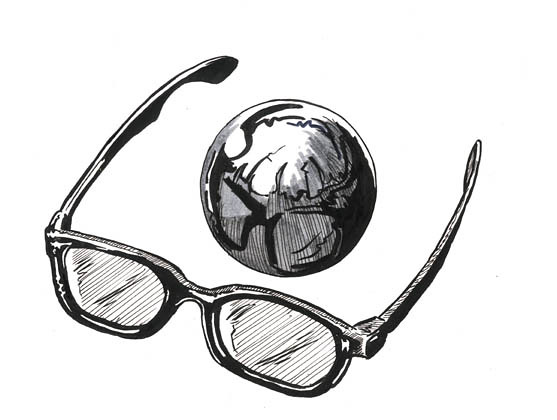substack beep boop
dang, this is awesome::
dang, this is awesome::
Velocity was on last week, and I was following along enviously on twitter - I'm making a promise to myself that I'll be along in person next year!
Quite a few of the talks now appearing online - here's a couple I've watched so far..

“The SLB-10 is the latest generation of ORB manufactured by Ono-Sendai, utilizing state of the art EM pulse powered flotation; archive-quality audio and visual recording capabilities; fully CMYK coloured, tactile holographic capability; and guaranteed always-on connection to your personal encrypted data storage facility.
ORBs have become so integral to our life and yet they are barely a 7 year old technology. It is worth reflecting on the brief history of these astounding devices, upon which we now rely so heavily.
In 2027, a group of engineers, skaterboarders and film-makers came together to work on a project utilizing the first commercial Shawyer/EmDrive propulsion system released by the British National Space Centre. Their early device was designed initially as a simple anti-gravity camera to be able to follow a moving person, while filming and streaming the data. It was a personal project for their own use, but they also expected it would be useful for other filming niches. What they hadn’t expected was the enormous demand from the general public, as real-time life-recording and live-blogging quickly took off, finding a multitude of personal and business uses. They formed a company to market their ORB devices, calling themselves Ono-Sendai, in joking homage to William Gibson.
The market for ORBs exploded, with feature upon feature being added in response to consumer demand: multiple cameras, higher definition a/v recording, voice control and audio speakers, automated laser protection systems, and crucially - the visual feed became integrated with in-Frame overlays. In those days Frames were still competing with handheld devices, before we perfected the means to spatially interact with data.
Two more pieces were necessary to bring us up to date with the contemporary ORB experience - the addition of the holo-projector in 2030, in order to finally disperse with a physical interface; and, more recently in 2032, the first mature ultrasound-based haptic holographic interface was introduced to provide a truly tactile experience.
As many imitators as there are on the market, Ono-Sendai manages to stay one step ahead of the competitors due its truly innovative operating system, SOLX - Son Of LinuX, the most advanced and personable decision-taking, realtime smart O/S. With Ono-Sendai and SOLX assisting your life, you be sure of trusted network access, personal security, and reliable data archive - Get on with enjoying your life!”
// reblog from old Drawing B0ard post
Unfortunately I forget where I found this link - Hacker News? The Edge Newsletter? I dunno, but it's a pretty interesting one -
A debate between an MIT professor, Erik Brynjolfsson, and an Economist, Tyler Cowen, about the the role of technology in driving economic growth. My views side with the MIT professor, as does most of the audience in the debate.
I won't repeat any of the arguments made in the debate, but what I will add is that the unequal distribution of wealth we see around today is not a symptom of lack of technological growth, it is purely down to good old fashioned political manipulation and deep rooted traditions of cronyism, a tradition thousands of years old.
Technology on the other hand: absolutely it's what will drive the economy, but even that view completely misses the big picture, which is the Medium itself, The Universal Network. I believe we have created a whole new dimension, an evolutionary mathematical abstracted form of biology. This is the beginning of History, Year Zero.
One hundred years from now, or two thousand - people will be able to look back in time and know with a rich level of detail what our life is like now. Thousands, upon millions of instances of video and audio, images, writings, geo locations, online trails, all readily accessible, interlinked and searchable. This level of detail will only increase, as we start recording every aspect of life.
With such archives of data, I can easily imagine the kids of 2123 being able to walk through and interact with a virtual London in the swinging 2020′s, or San Francisco's roaring 2030′s. Whereas, for future generations, any time predating the late 1990′s will essentially be a static foreign place in comparison. We have created time-travel - we just don't know it yet.
This Network has already achieved a basic level of independence from humanity - where now it is possible for a Something to exist outwith a single containing computer system using techniques like redundancy and geographic load-balancing. I don't mean to imply there is any intelligence there, but there is a level of resilience we've never seen in nature before. To give a more concrete example, I'm referring to something like you as a user interacting with the amazon website to purchase something, meanwhile the power goes out in the datacentre hosting the server your browser was communicating with, and, if engineered correctly, your interaction could continue, picked up by a secondary datacentre with no loss of data, nor interruption of service. This isn't exactly life as we know it, but if you squint your eyes just a little, its not too hard to see an analogy to biological cell life.
Over the next few years, Society's experience of reality is going to go through the biggest change in history, as our physical world merges completely with this new virtual world of realtime interconnected information and communication, completely warping our sense of time and geography.
The iPhone was stage one, Google Glasses or something very similar will be stage two, and its right around the corner.
Fabulous piece and video chat with George Dyson over at the always reliable Edge -
yow, this is some hardcore indepth port scanning shizzle -